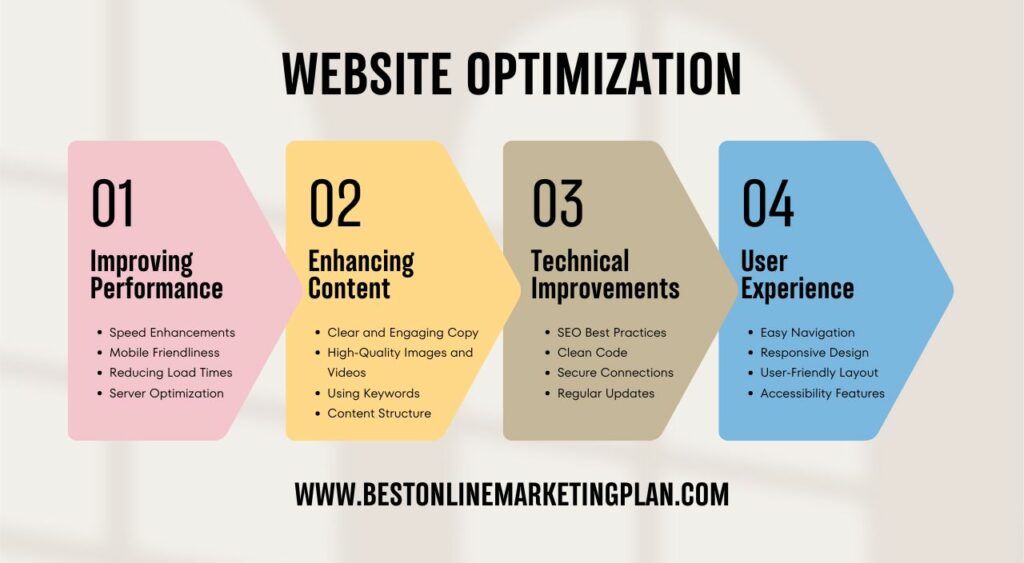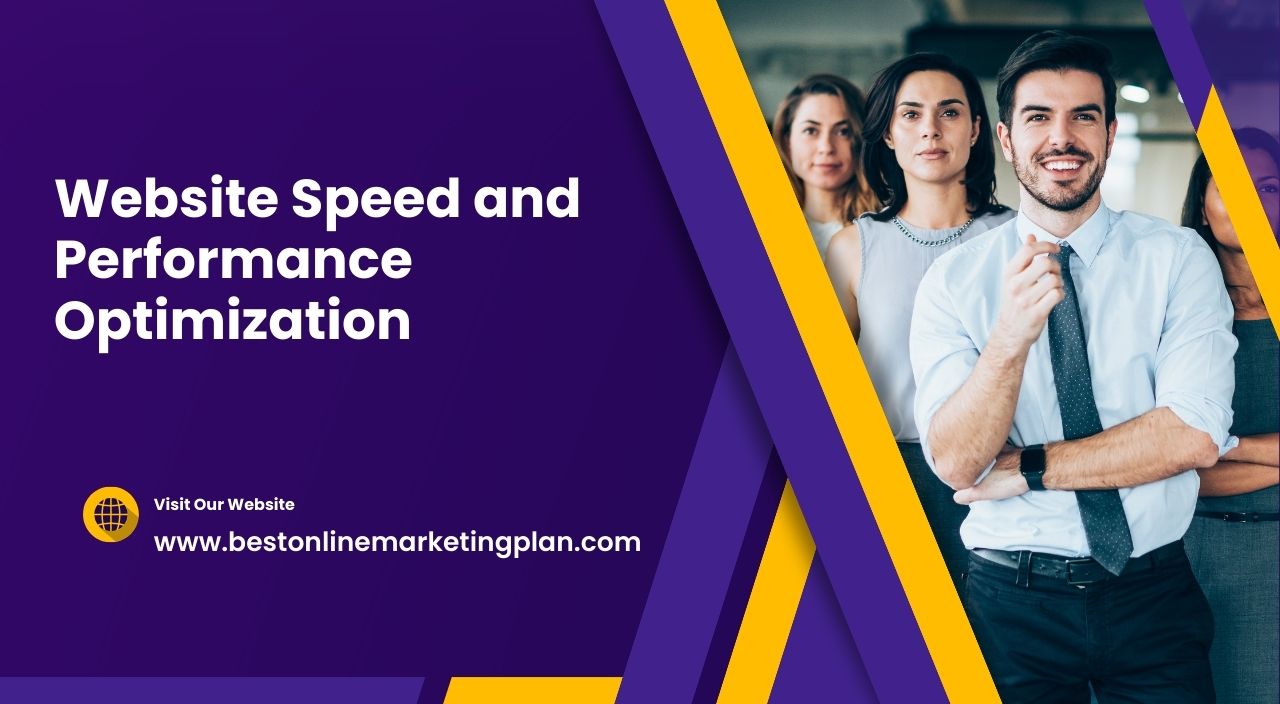Website speed and performance optimization is a crucial aspect of modern web development and digital marketing. In today’s fast-paced online world, users expect websites to load quickly and function smoothly. A slow or poorly optimized website can lead to frustrated visitors, higher bounce rates, and ultimately, lost business opportunities. As someone who’s spent years helping clients improve their online presence, I’ve seen firsthand how optimizing website speed and performance can dramatically impact a site’s success.
Why Website Speed Matters
Before we dive into the nitty-gritty of optimization techniques, let’s talk about why website speed is so important. Picture this: you’re browsing the web, looking for information on a product you’re interested in. You click on a link, and… nothing happens. Well, not nothing, but the page is taking forever to load. What do you do? If you’re like most people, you hit the back button and try another site.
This scenario plays out millions of times a day across the internet. In fact, studies have shown that:
- 47% of consumers expect a web page to load in 2 seconds or less
- 40% of people abandon a website that takes more than 3 seconds to load
- A 1-second delay in page response can result in a 7% reduction in conversions
These statistics paint a clear picture: speed matters. But it’s not just about user experience. Website speed also affects:
- Search Engine Rankings: Google and other search engines consider page speed as a ranking factor.
- Conversion Rates: Faster sites tend to convert better, whether that’s sales, sign-ups, or other desired actions.
- User Engagement: Visitors spend more time on faster websites, exploring more pages and content.
Key Factors Affecting Website Speed
Now that we understand the importance of website speed, let’s look at some of the key factors that can slow down your site:
- Large File Sizes: Unoptimized images, videos, and other media files can significantly increase load times.
- Excessive HTTP Requests: Each element on a page requires a separate HTTP request, which can add up quickly.
- Unoptimized Code: Bloated HTML, CSS, and JavaScript can slow down rendering and execution.
- Server Response Time: Slow servers or inefficient database queries can cause delays.
- Render-Blocking Resources: CSS and JavaScript that prevent the page from rendering quickly.

Strategies for Optimizing Website Speed and Performance
Now, let’s roll up our sleeves and get into the practical steps you can take to speed up your website. I’ll share some of the most effective techniques I’ve used over the years.
1. Optimize Your Images
Images often make up the bulk of a webpage’s file size. Here are some ways to optimize them:
- Compress Images: Use tools like TinyPNG or ImageOptim to reduce file sizes without significant quality loss.
- Choose the Right Format: Use JPEGs for photographs, PNGs for graphics with transparency, and consider WebP for modern browsers.
- Implement Lazy Loading: Load images only as they come into the viewport, reducing initial page load time.
2. Minify and Combine Files
Reducing the number and size of files your site needs to load can have a big impact:
- Minify CSS, JavaScript, and HTML: Remove unnecessary characters, white space, and comments.
- Combine Files: Merge multiple CSS or JavaScript files into one to reduce HTTP requests.
- Use CSS Sprites: Combine multiple images into a single file and use CSS to display the right portion.
3. Leverage Browser Caching
Caching allows browsers to store static files locally, so they don’t need to be downloaded again on subsequent visits:
- Set Expiry Headers: Tell browsers how long to cache different types of files.
- Use a Content Delivery Network (CDN): Distribute your content across multiple, geographically diverse servers.
4. Optimize Your Server
Your server configuration can have a significant impact on speed:
- Use a Fast Web Host: Choose a reliable hosting provider with good performance.
- Enable GZIP Compression: Compress files before sending them to the browser.
- Optimize Database Queries: Ensure your database is running efficiently, especially for dynamic content.
5. Minimize Render-Blocking Resources
Render-blocking resources prevent the browser from displaying page content quickly:
- Load CSS in the Document Head: This allows the browser to start rendering as soon as possible.
- Defer JavaScript: Use the
deferattribute to load scripts after the HTML has been parsed. - Inline Critical CSS: Place essential styles directly in the HTML to avoid an extra request.
6. Implement AMP or PWA Technologies
For mobile users, consider implementing technologies designed for speed:
- Accelerated Mobile Pages (AMP): A Google-backed project for creating fast-loading mobile pages.
- Progressive Web Apps (PWAs): Web apps that load like regular web pages but offer app-like functionality.
Measuring and Monitoring Website Speed
Optimizing your website isn’t a one-time task. It’s an ongoing process that requires regular monitoring and tweaking. Here are some tools and metrics to help you stay on top of your site’s performance:
Tools for Speed Testing
- Google PageSpeed Insights: Provides speed scores and optimization suggestions for both mobile and desktop.
- GTmetrix: Offers detailed performance reports and recommendations.
- WebPageTest: Allows you to test your site from multiple locations and devices.
Key Metrics to Monitor
| Metric | Description | Target |
|---|---|---|
| Time to First Byte (TTFB) | Time it takes for the server to respond | < 200ms |
| First Contentful Paint (FCP) | When the first content appears on screen | < 1.8s |
| Largest Contentful Paint (LCP) | When the largest content element is visible | < 2.5s |
| Total Blocking Time (TBT) | Sum of all time periods between FCP and Time to Interactive | < 300ms |
| Cumulative Layout Shift (CLS) | Measures visual stability | < 0.1 |
The Impact of Speed on SEO and User Experience
It’s worth emphasizing that website speed isn’t just about technical metrics—it has real-world implications for your site’s success. Getting started online can be challenging, and optimizing for speed is a crucial step in building a successful web presence.
From an SEO perspective, Google has made it clear that page speed is a ranking factor. Faster sites are more likely to appear higher in search results, leading to increased visibility and organic traffic. But beyond search rankings, speed directly impacts user experience, which in turn affects key business metrics like:
- Bounce Rate: Slower sites typically have higher bounce rates as users get frustrated and leave.
- Pages Per Session: Users are more likely to explore multiple pages on a fast, responsive site.
- Average Session Duration: Faster sites tend to keep users engaged for longer periods.
- Conversion Rate: Speed can significantly impact your bottom line by improving conversion rates.
Advanced Techniques for the Performance-Obsessed
If you’ve implemented the basics and want to take your site’s performance to the next level, consider these advanced techniques:
1. HTTP/2 Implementation
HTTP/2 offers several performance benefits over HTTP/1.1, including:
- Multiplexing: Allowing multiple requests and responses in parallel
- Header compression: Reducing overhead
- Server push: Proactively sending resources the client will need
2. Critical CSS Extraction
Identify and inline the CSS required for above-the-fold content, deferring the rest. This can significantly improve perceived load times.
3. Resource Hints
Use <link rel="preload">, <link rel="prefetch">, and other resource hints to inform the browser about critical resources it should load early.
4. Service Workers
Implement service workers to enable offline functionality and faster subsequent page loads by caching resources locally.
5. WebP Image Format
Adopt the WebP image format for supported browsers, which offers superior compression compared to JPEG and PNG.
Balancing Speed and Functionality
While optimizing for speed is crucial, it’s important to strike a balance between performance and functionality. Sometimes, features that add value to your site may also add some weight. The key is to implement these features efficiently and ensure that the benefits outweigh any potential speed costs.
For example, if you’re running an affiliate marketing site, you might be using a platform like Wealthy Affiliate to manage your campaigns and track performance. While such platforms can add some overhead, their benefits in terms of improved marketing effectiveness and revenue generation often justify the small performance trade-off.
The Future of Web Performance
As we look to the future, several trends are shaping the landscape of web performance:
- 5G Networks: The rollout of 5G will dramatically increase mobile speeds, but it also raises user expectations for performance.
- AI-Driven Optimization: Machine learning algorithms will increasingly be used to predict user behavior and preload resources accordingly.
- Edge Computing: Moving computation closer to the user will reduce latency and improve response times.
- Web Assembly: This low-level language allows near-native performance for web applications.
Conclusion: Speed as a Competitive Advantage
In conclusion, website speed and performance optimization is not just a technical consideration—it’s a crucial business strategy. In an online world where attention spans are short and competition is fierce, a fast, responsive website can be a significant competitive advantage.
By implementing the strategies we’ve discussed—from basic image optimization to advanced techniques like HTTP/2 and service workers—you can dramatically improve your site’s performance. This, in turn, will lead to better user experience, higher search engine rankings, and ultimately, improved business results.
Remember, optimization is an ongoing process. Technology and user expectations are constantly evolving, so it’s important to regularly audit your site’s performance and make improvements. Whether you’re just getting started online or you’re looking to take your established site to the next level, focusing on speed and performance is always a smart investment.
So, take the time to analyze your site’s current performance, implement these optimization techniques, and watch as your site speeds up and your metrics improve. Your users—and your bottom line—will thank you!

